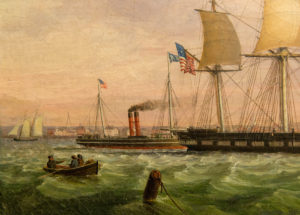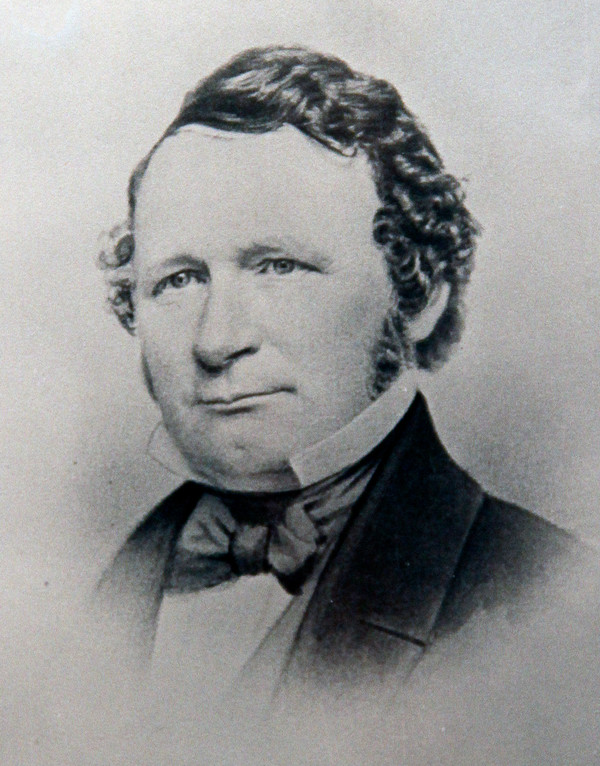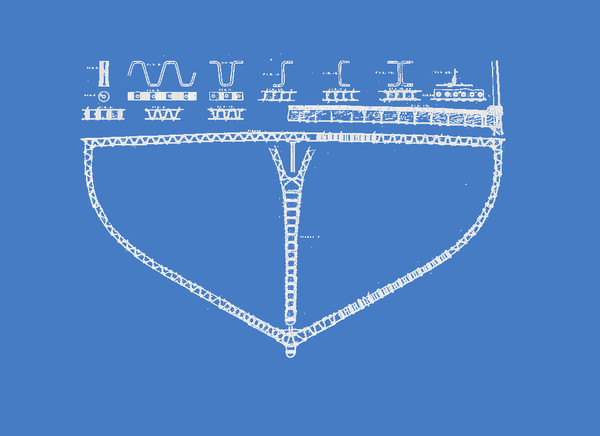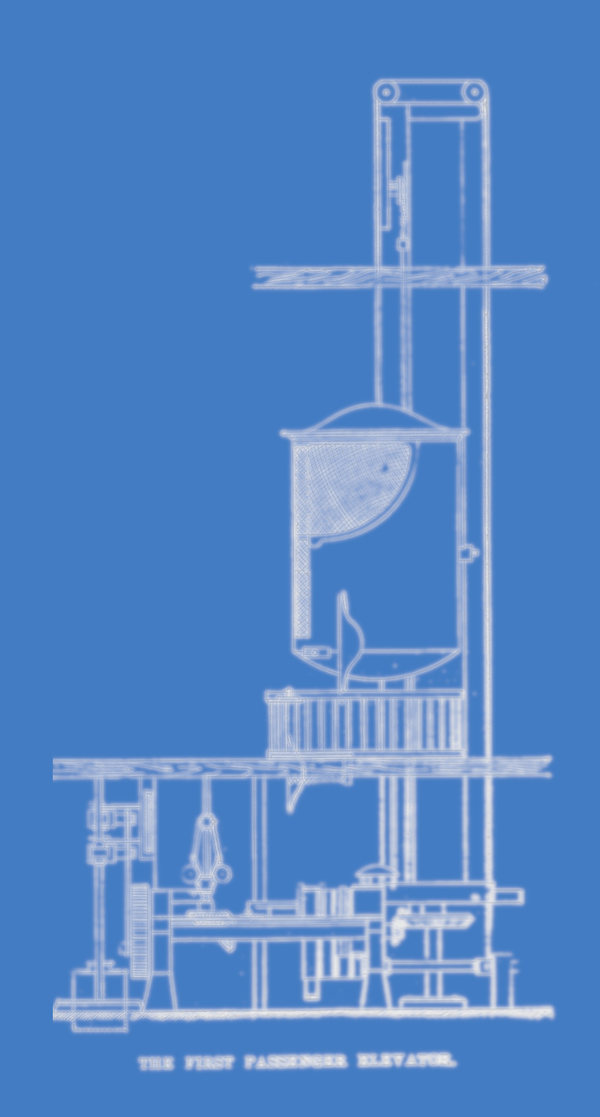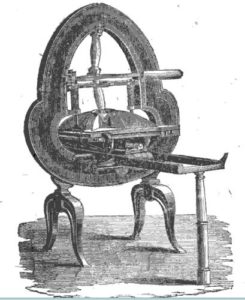Prolific Inventor: Otis Tufts
in East Boston
(awaiting installation)
Iron-hulled R. B. Forbes with its twin smoke stacks is shown alongside the U.S.S.Jamestown, famous for its famine relief journey to Ireland. The R. B. Forbes was also used extensively in salvage operations.
Detail of the painting courtesy of the Robert Bennet Forbes House Museum, Milton, Mass
Otis Tufts built the first iron-hulled vessel in the United States on this wharf in 1854. Named the R.B. Forbes, after its owner Robert Bennet Forbes, it was often used to tow clipper ships built along Border Street to their owners in New York. During the Civil War, the tugboat served in the Union blockade of Confederate ports until a gale sank it off Virginia in1862.
The Cambridge-born Tufts was a remarkable inventor, machinist, and pioneer in steam-powered technology, which he applied to printing, marble cutting, and sugarcane refining. On seeing men building the Boston Custom House driving piles by hand (c. 1840), he returned the next day with drawings for a steam-driven pile driver that revolutionized construction.
And in 1859, Tufts invented the first passenger elevator. Previously elevators were used only for freight. His “vertical railway elevator,” as he called it, rose slowly along a solid iron screw. Installed at the Fifth Avenue Hotel in New York City, the novelty drew hundreds of visitors daily.
Sign Location
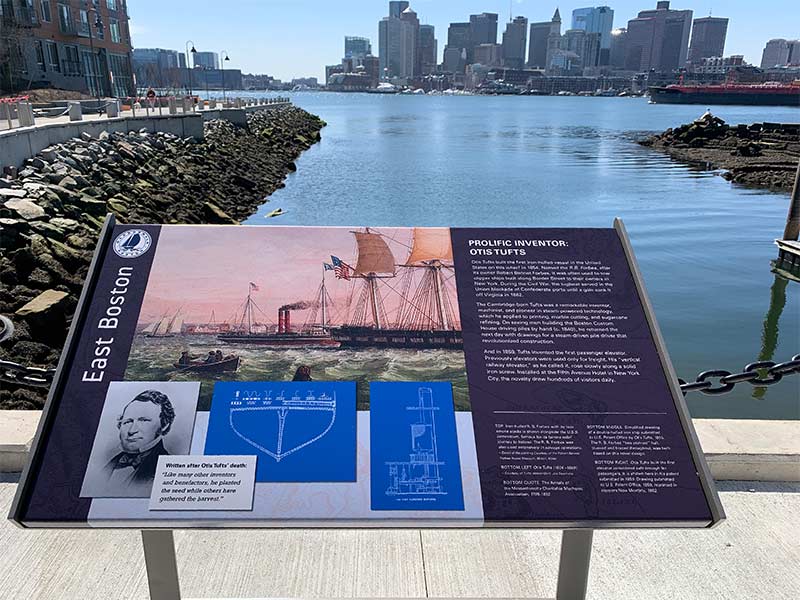
More …
Resources
Invention of Pile Driver in “Annals of the Massachusetts Charitable Mechanic Association, 1795-1892” By Massachusetts Charitable Mechanic Association.
Baker, William A. A History of the Boston Marine Society, 1742–1981. Boston Marine Society, 1982.
Gray, Lee. From Ascending Rooms to Express Elevators: A History of the Passenger Elevator in the 19th Century. Elevator World, Inc, 2002.
Seasholes, Nancy & The Cecil Group. Sites for Historical Interpretation on East Boston’s Waterfronts. Boston: Boston Redevelopment Authority, 2009.
Tufts’ original patent drawing of double-hulled iron ship https://www.google.com/patents/US13278
Auxiliary Steamships and R.B. Forbes
http://www.pem.org/library/american_neptune/AuxiliarySteamshipsAndRBForbes.pdf
Acknowledgments
- Thank you to Nancy Seasholes for her expertise and support.
- Our gratitude to the Perkins School for the Blind and David W. Cook for their partnership in creating the audio files.

